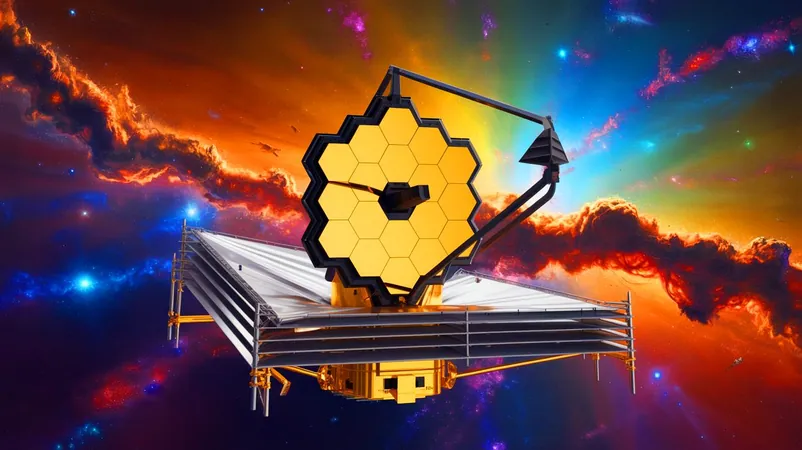
James Webb Telescope Unveils Largest Cosmic Map: A Stunning View of 13.5 Billion Years of History!
2025-07-09
Author: Charlotte
A Giant Leap in Cosmic Mapping!
In a groundbreaking achievement, the James Webb Space Telescope (JWST) has unveiled the largest map of the universe ever created. This monumental work, orchestrated by the Cosmic Evolution Survey (COSMOS) collaboration, opens a window to nearly 13.5 billion years of cosmic history. By meticulously mapping close to 800,000 galaxies in a relatively small area of the sky, researchers are shedding light on the evolution of the universe, showcasing humanity's unyielding quest for knowledge.
Mapping the Cosmos: A Historic Achievement
This extraordinary map spans an area of just 0.54 degrees squared of the sky, capturing an incredible diversity of galaxies, some of which exist from a time when the universe was still in its formative years. The JWST, equipped with its powerful infrared instruments, plays a crucial role, allowing scientists to detect faint signals from these ancient galaxies. This feat highlights not just the capabilities of the JWST, but also the importance of advanced technology in enhancing our cosmic comprehension.
Infrared Technology: The Key to Cosmic Insights
The JWST’s advanced infrared technology has been instrumental in creating this cosmic masterpiece. As the universe expands, the light from distant galaxies shifts into the infrared spectrum, invisible to traditional telescopes. The JWST’s design allows it to capture these elusive signals, revealing galaxies from the dawn of time and forever altering our understanding of cosmic birth. This telescope is not just a tool; it’s a game-changer for astronomy!
Overcoming Challenges Through Collaboration
Producing such a detailed cosmic map was no small feat; it involved innovative data processing methods. The raw data from the JWST was initially complex and challenging to work with, requiring not only specialized expertise but also advanced computing power. After two arduous years, the COSMOS team has made the data accessible, inviting amateur astronomers and the public to delve into these cosmic wonders and encouraging a new era of exploration.
What Lies Ahead for Cosmic Discoveries?
This newly unveiled map sets the stage for revolutionary discoveries. With the detection of ten times more galaxies than previously expected, it dares to challenge existing cosmological theories and opens countless new research pathways. These findings hint at a richly populated universe, with hidden supermassive black holes now coming into view. As researchers delve deeper into this treasure trove of data, we are likely to see profound shifts in our understanding of cosmic evolution and galaxy formation.
A Beacon of Curiosity and Discovery
As we stand on the edge of new cosmic frontiers, the largest-ever map of the universe is not just a scientific success; it represents mankind’s insatiable curiosity and innovative spirit. By illuminating the early epochs of the universe, this map invites us to reflect on the vast expanse of space and the origins of our existence. What wonders will we uncover next as we continue our quest to explore the depths of the cosmos?









 Brasil (PT)
Brasil (PT)
 Canada (EN)
Canada (EN)
 Chile (ES)
Chile (ES)
 Česko (CS)
Česko (CS)
 대한민국 (KO)
대한민국 (KO)
 España (ES)
España (ES)
 France (FR)
France (FR)
 Hong Kong (EN)
Hong Kong (EN)
 Italia (IT)
Italia (IT)
 日本 (JA)
日本 (JA)
 Magyarország (HU)
Magyarország (HU)
 Norge (NO)
Norge (NO)
 Polska (PL)
Polska (PL)
 Schweiz (DE)
Schweiz (DE)
 Singapore (EN)
Singapore (EN)
 Sverige (SV)
Sverige (SV)
 Suomi (FI)
Suomi (FI)
 Türkiye (TR)
Türkiye (TR)
 الإمارات العربية المتحدة (AR)
الإمارات العربية المتحدة (AR)